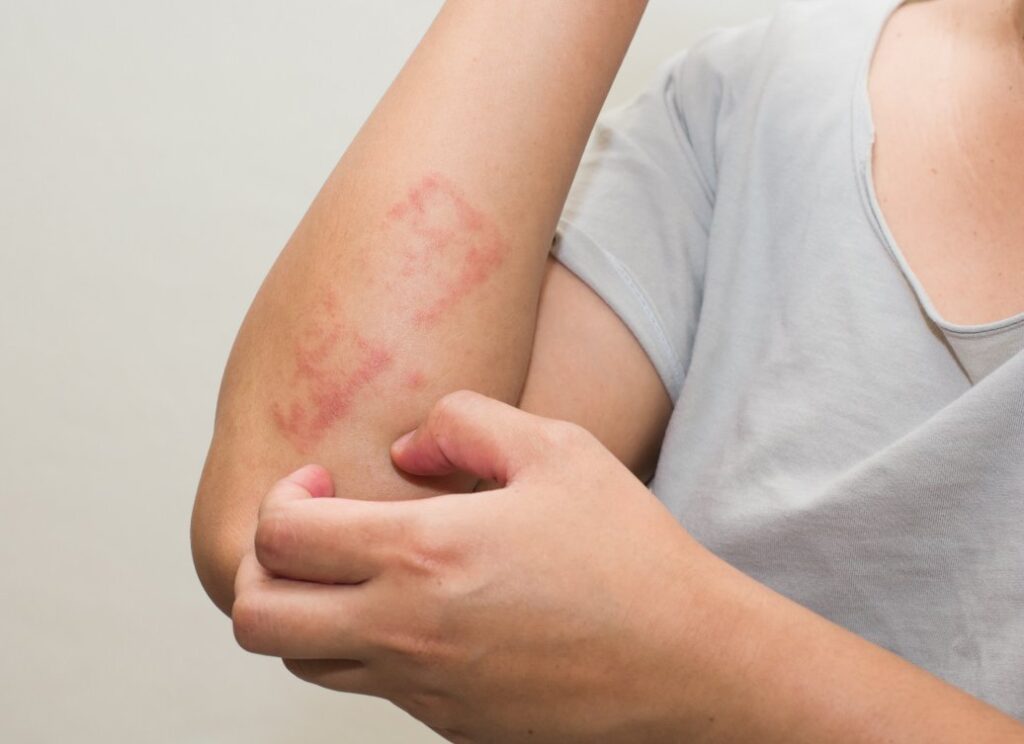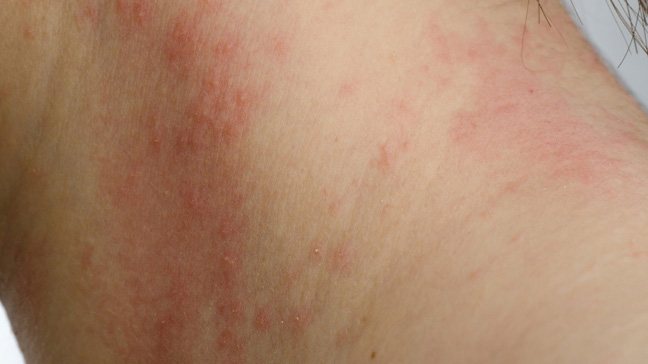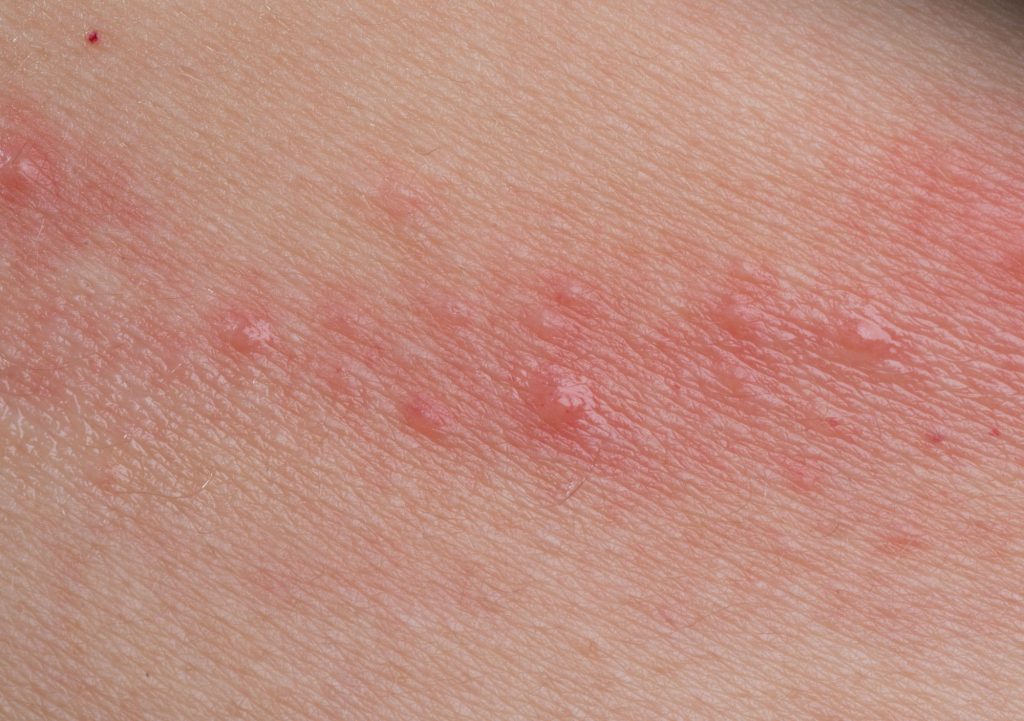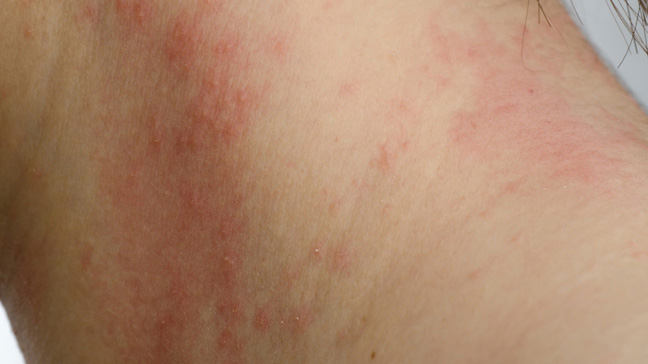Contact dermatitis is an itchy rash caused by direct contact with a substance or an allergic reaction to it. It can be very uncomfortable but not contagious. It has 3 types that can be severe. To treat this condition successfully, you need to identify the type and avoid the cause of your reaction. Scroll till the end to learn all types of contact dermatitis, symptoms, causes, prevention, and treatment.
What Is Contact Dermatitis
It is one of the types of eczema that is triggered when a person contacts directly with a particular substance. In this condition, skin becomes, red inflamed, itchy, and sore a day or two after the skin is exposed to an allergen.
Contact dermatitis is common. We are surrounded by irritants and potential allergens. You might experience this more commonly if you have sensitive skin or some other chronic skin problems.
Types Of Contact Dermatitis
It has three types:
- Allergic contact dermatitis
- Irritant contact dermatitis
- Photo contact dermatitis
Allergic Contact Dermatitis
The skin develops an allergic reaction in this condition after being exposed to a material called an allergen. As a result, the body release inflammatory chemicals that make the skin itchy and irritated skin. Symptoms may appear after minutes, hours or several days after being exposed.
Causes
When a person contacts:
- Chemical-based skin care products and makeup products.
- Latex rubber.
- Jewelry is made from nickels or gold.
- Rubber gloves
- Bleach and detergents
- Hair products
- Airborne substances
- Plants such as poison ivy and mango, contain a highly allergenic substance called urushiol
- Fertilizers and pesticides
Symptoms Of Allergic Dermatitis:
Below are the symptoms of allergic dermatitis:
- Red rash.
- Swollen or blistering rash.
- Burning or stinging.
- Flaky or scaling.
- Swollen or hive-like.
- Itchy rashes
- Painful rashes.
Irritant Contact Dermatitis
When the skin comes in contact with the toxic material, allergic contact dermatitis happens. This no-allergic skin reaction occurs when an irritant damages your skin’s outer protective layer. It is the most common type.
Causes
Common causes of irritant this condition may include:
- Acids.
- Alkalis are like drain cleaners.
- Body fluids, including urine and saliva.
- Certain plants, such as poinsettias and peppers.
- Hair dyes.
- Nail polish remover or other solvents.
- Paints and varnishes.
- Harsh soaps or detergents.
- Resins, plastics, and epoxies.
Symptoms Of Irritant Dermatitis:
Symptoms of this condition vary widely and may include:
- An itchy rash
- Leathery patches that are darker than usual.
- Dry, cracked, scaly skin.
- Bumps and blisters, often with oozing
- Swelling, burning sometimes tenderness.
Make face oil for instantly glowing skin
Photo Contact Dermatitis
This condition is less common and develops when the active ingredients in skin products are exposed to the sun.
Picture Of Contact Dermatitis



Treatment Of Contact Dermatitis
Usually, it can take up to several weeks to go away. All types of this condition are treated in the same way.
Read below to know how can this condition be treated:
- Avoid the things that cause rash, if you figure out what causes the rash.
- Anti-itch creams can ease itching and inflammation.
- It is possible to have different types of contact dermatitis at the same time. You may need to avoid several different allergens or irritants.
- For blisters, use a cold moist compress for 30 minutes, three times a day.
- Topical steroids.
- Moisturize your damaged skin multiple times a day. It will help in restoring the protective layer.
- Emollient creams.
- Wash your skin with mild soap and cool water right away.
- Use fragrance and chemical-free skin care products and makeup products.
20 natural remedies for fine lines and wrinkles
Prevention
- Keep your home clean all the time.
- Use a barrier cream to protect the skin.
- Avoid extreme changes in cold, heat, and humidity.
- Avoid getting too dry
- Allergens from plants, such as poison ivy, can cling to pets and then spread to people. Bathe your pet in this case.
- Avoid scratching your irritated skin. It can make the irritation worse or even cause an infection.
When To Consult A Doctor
If you notice the symptoms that are mentioned below, then should consult your doctor:
- Blisters.
- Goes away for a while and then returns.
- Looks infected (red, warm, or swollen)
- Hurts.
- Distracts you from sleeping
- Appears suddenly
- Spreads over a large part of your body
- Itches constantly.
- Doesn’t go away in a week with treatment.
Frequent Asked Questions
Why is my dermatitis getting worse?
Heat, humidity, and temperature changes can all trigger AD flare-ups. Taking a hot bath or shower can make it worse. Use a barrier cream to protect your skin and prevent your skin from getting too dry.
Q. How long does this skin condition last?
The rash due to this condition develops after some minutes or hours of exposure and last 15 days to 1 month.
Q. Does it go away on its own?
It goes away on its own in most cases. once the substance is no longer in contact with the skin. When the skin is no longer in contact with the substance, in most cases it goes away on its own.




